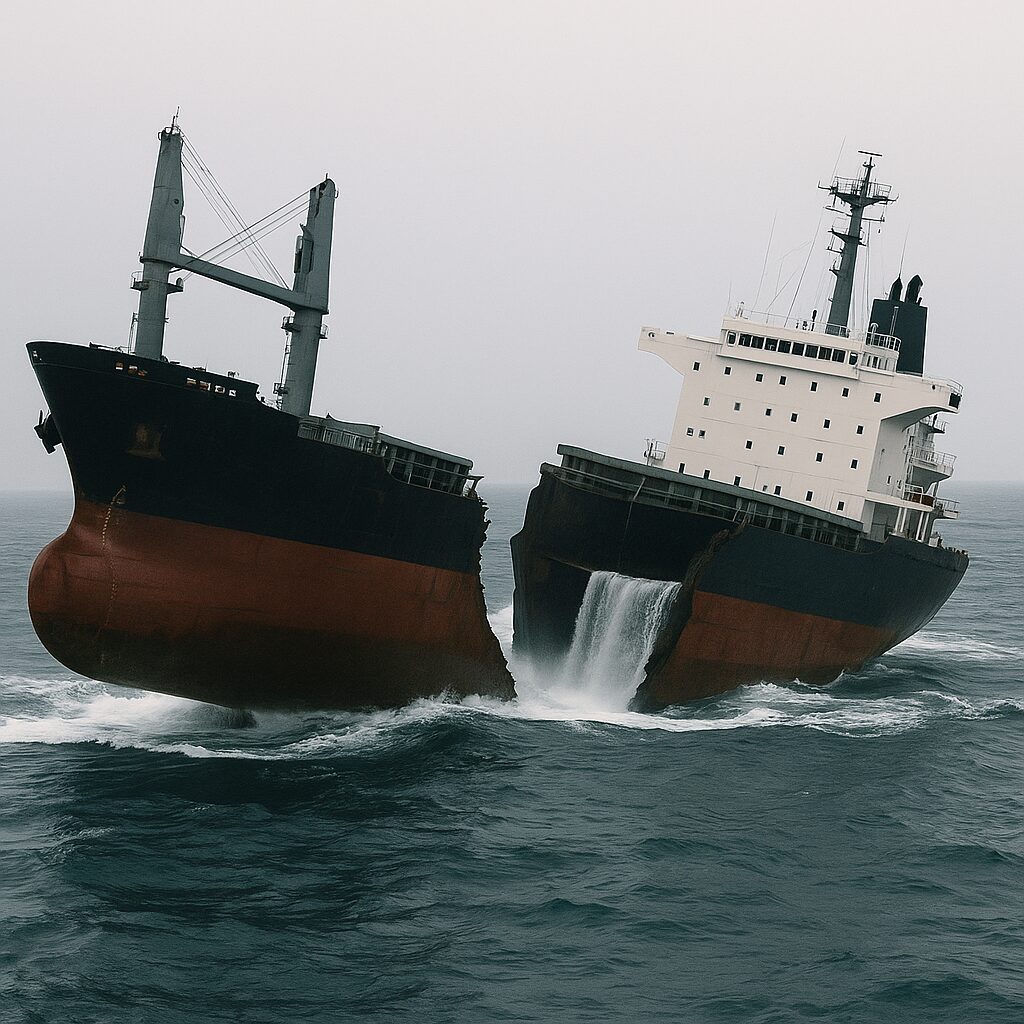The Deadly Era of Bulk Carrier Breakups: What Went Wrong and How the Industry Fought Back

Why Ships Were Sinking: The 1990s Crisis
Between 1980 and 1994, approximately 148 bulk carriers were lost, claiming over 1,100 lives. The losses weren't random; they were the result of converging structural, operational, and environmental factors.
The "Progressive Flooding" Chain
The terrifying speed of sinkings (often < 5 minutes) was due to a specific structural chain reaction. SOLAS XII was designed specifically to break this chain.
Hold 1 Breach
Green water destroys hatch covers or hull corrosion fails. Hold 1 fills with water.
Trim by Head
Water weight in the bow pushes the nose down. Speed reduces, pressure on Bulkhead 1/2 increases drastically.
Bulkhead Collapse
The bulkhead between Hold 1 and 2 cannot withstand the sloshing water + cargo pressure. It buckles.
Catastrophic Sinking
Water rushes into Hold 2. The ship loses longitudinal stability and plunges bow-first.
SIMULATION: PROGRESSIVE FLOODING
The Response: SOLAS Chapter XII Provisions
Adopted in 1997 and entered into force in July 1999, these regulations apply specifically to bulk carriers over 150m in length carrying high-density cargoes (>1,780 kg/m³).
Safety Impact Analysis
Comparing losses before and after SOLAS XII implementation.
Key Outcome:
The regulations successfully eliminated the "mystery sinkings." While bulk carriers still ground or collide, structural failure leading to rapid loss of life has dropped precipitously.
10-Year Trend
Why it worked:
- Early warning (Reg 12) allows for distress calls.
- Stronger bulkheads (Reg 5) buy time.
- Stricter Surveys (ESP) catch corrosion early.
